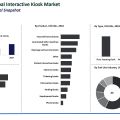Recycled glass market to reach valuation of ~us$ 4.6 bn by 2027
Recycled Glass Market: Introduction
The global recycled glass market was valued at ~US$ 2.6 Bn in 2018 and is anticipated to expand at a CAGR of ~7% during the forecast period. Glass cullet can be used in place of silica, limestone, soda ash, and other ingredients to manufacture new glass bottles or fiberglass. When glass is recycled, it is cleaned, sterilized, dried, sorted by color, and reduced to sizes that range from pebbles to sand and even powder. Glass fines are used in asphalt, construction and road aggregates, concrete aggregate, and insulation batts as well as in sand/abrasive grit blasting, sports turf/drainage, brickmaking, and water filtration. Glass fines are used as abrasives and several recycling companies use lower-quality glass as roadbed or aggregate.
Key Drivers of Recycled Glass Market
Recycled glass is employed in a variety of applications. Demand for glass cullet is significantly high in the fiberglass insulation industry and it is used for residential, commercial, and industrial fiberglass applications. According to the North American Insulation Manufacturers Association (NAIMA), which is the trade association for manufacturers of fiberglass and rock and slag wool (mineral wool) insulation based in North America, fiberglass insulation manufacturers are the second-highest consumers of mixed bottle cullet in the U.S., next only to glass container manufacturers. Fiberglass is utilized in diverse applications such as building insulation, pipe insulation, aerospace, appliances, and automotive.
Request a Sample-
https://www.transparencymarketresearch.com/sample/sample.php?flag=S&rep_id=47178
Manufacturers of fiberglass are focused on increasing the content of recycled glass in their products. This would not only decrease the amount of community landfill waste, but would also lower the energy use during the production of insulation, as raw materials such as sand require higher amount of energy.
The Glass Recycling Coalition (GRC) and North American Insulation Manufacturers Association (NAIMA) are supporting the glass recycling industry as well as the entire glass recycling supply chain for fiberglass insulation. The factors mentioned above indicate that rise in the demand for fiberglass insulation in North America boosts the demand for recycled glass in the region.
Request for covid19 impact analysis –
https://www.transparencymarketresearch.com/sample/sample.php?flag=covid19&rep_id=47178
Bottles & Containers to Offer Lucrative Opportunities
Among applications, bottles & containers was the most rapidly expanding segment of the global recycled glass market in 2018. Recycled glass is primarily used in bottles and containers. Demand for recycled glass in the glass container industry is significant, owing to high demand by companies producing glass bottles for beverages such as wine, beer, and even water. Recycled glass is also used in the manufacture of abrasive grades of glass. Abrasive grades of recycled glass are used in all major blasting industries, such as shipyards (steel/aluminum), tanks/pipelines, concrete restoration (pre-cast concrete), wood/log homes, auto-restoration, slurry/vapor blasting, and dustless and wet blasting.
Europe a Key Recycled Glass Market
Among regions, Europe accounted for a prominent share of the global recycled glass market in 2018. The region is expected to remain a highly lucrative market for recycled glass during the forecast period, owing to growth of the glass packaging industry in Europe. The U.S. accounted for the maximum share of the recycled glass market in North America in 2018. The market in the country is expected to expand at a rapid pace during the forecast period, owing to presence of major manufacturers of recycled glass, such as Strategic Materials, in the U.S. These players are engaged in distribution, sale, and research and development of recycled glass in North America. The U.S. Government largely focuses on strengthening its core base in renewable energy systems in order to restore its depleting sources of fossil fuel. Asia Pacific was the most rapidly expanding market for recycled glass in 2018, owing to presence of some of the most rapidly expanding economies in the region, such as China, India, and South Korea, and rising demand for fiberglass insulation in the building & construction industry in Asia Pacific
Buy now-
https://www.transparencymarketresearch.com/checkout.php?rep_id=47178<ype=S
Major Players in Recycled Glass Market
The global recycled glass market is consolidated. The top five players i.e. Strategic Materials, Inc., Pace Glass, Dlubak Glass Company, CAP Glass, and Gallo Glass Company cumulatively accounted for more than 70% share of the global market in 2018. In 2018, Strategic Materials, Inc. produced about three million tons of recycled glass. The large production by the company can be attributed to its continuous focus on innovations, implementation of growth strategies, and expansion of business through strategic capital allocation and extensive research and development activities. The company has nearly 50 plants across North America. Manufacturers distribute their products either directly to consumers, through bulk or wholesale ordering or distribution agreements.
Other companies include a large number of local manufacturers in India and China, which produce recycled glass in smaller volumes and serve domestic markets. These are part of the unorganized sector in these countries.
Global Recycled Glass Market: Segmentation
Recycled Glass Market, by Product
- Glass Cullet
- Glass Fines
Recycled Glass Market, by Application
- Bottles & Containers
- Fiberglass Insulation
- Abrasives
- Filtration
- Others (including Concrete, Asphalt, and Filler Applications)
Recycled Glass Market, by Region
- North America
- U.S.
- Canada
- Europe
- Germany
- Belgium
- Sweden
- Norway
- Finland
- Switzerland
- Rest of Europe
- Asia Pacific
- China
- Japan
- India
- ASEAN
- Rest of Asia Pacific
- Rest of World
Companies in the Recycled Glass market have increasingly shifted gears with wide application of digital technology across the continuum, from raw material sourcing to manufacturing to generation of final output, to warehousing to final distribution operations. Among the various affects, the market is witnessing new growth economics due to thinning of line between specialty and commodity businesses that are associated with the larger ecosystem. At the same time, new growth parameters are being vigorously being debated as industry stakeholders put greater emphasis on the circular economy processes.
More Trending Report-







